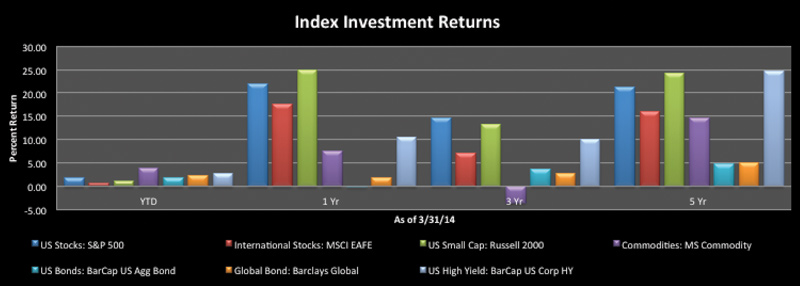
 Receiving a pay check when you are in your working years is pretty straightforward. You work hard each week, typically have a certain amount of federal and state taxes withheld, and you get paid. Pretty simple, right? Fast forward to the golden years of retirement, when you are no longer working for the income you receive, you are generally getting paid from the money from the portfolio you invested in over those hard-working years. At this stage, the tax treatment of your “pay check” becomes a little more complicated. With several different types of accounts and income sources, such as pension and Social Security, which account should you consider drawing the income from? Let’s take a look:
Receiving a pay check when you are in your working years is pretty straightforward. You work hard each week, typically have a certain amount of federal and state taxes withheld, and you get paid. Pretty simple, right? Fast forward to the golden years of retirement, when you are no longer working for the income you receive, you are generally getting paid from the money from the portfolio you invested in over those hard-working years. At this stage, the tax treatment of your “pay check” becomes a little more complicated. With several different types of accounts and income sources, such as pension and Social Security, which account should you consider drawing the income from? Let’s take a look:
Enjoying Life in the Go-Go Years
Take the example of a 63-year-old couple, just retired, and planning to enjoy a few years of extensive travel, golf and entertainment. Spending is typically a little higher in these initial years of retirement. At The Center, we refer to them as the “go-go” years. Both are receiving nice pension benefits ($100,000 total) and have collected Social Security ($40,000 total) at 62. The couple has their home paid off, live a healthy lifestyle and have very little itemized deductions and therefore take the standard deduction ($12,200) when they do their taxes. They have both accumulated sizable IRAs ($750,000 total) and a joint taxable brokerage account of $250,000. The clients would like to draw $60,000 from their portfolio for 6 years and begin to cut back once they are in their late sixties. So what account(s) do we take the $60,000 from? First off, let’s clarify the tax treatment between the IRA and joint account.
The IRA: Any funds withdrawn from the IRAs will be treated as ordinary income and included in taxable income at the end of the year. This is because the clients received a tax-deduction when they initially made contributions.
The Joint Account: Withdrawals from the joint account on the other hand, will not be treated as ordinary income – the funds contributed to this account never received a tax deduction. Unlike the IRA, however, the joint account does not grow tax-deferred and the clients will receive a 1099 each year showing capital gains or losses and any dividends or interest paid in the account.
The Answer: If we take the full $60,000 from the IRA, the additional income will push them from the 25% tax bracket into the 28% bracket and a portion of the distribution would be taxed at 28%. If the funds were taken from the joint account, the clients would not pay ordinary income tax on the distribution, thus keeping them in the 25% bracket and reducing their overall tax bill.
Everything in Moderation
Now let’s look at a different 63-year-old married couple living a much more modest lifestyle. They do not have a pension and usually only live off the $40,000 they receive in Social Security benefits. They also have a total of $750,000 between both of their IRAs and a $250,000 joint taxable brokerage account. Their Social Security benefits are not taxable in this case because their AGI is under the IRS threshold. They still have a mortgage on their home and give money to several charities throughout the year which allows them to itemize their deductions ($25,000 total). This year is an exception to their normal frugal lifestyle; they’d like to take $10,000 from their portfolio to go on a 10 day vacation to Hawaii. What account(s) should they take the funds from? (Hint: Think of the difference between the tax treatment for the IRA and joint account from our previous example)
The Answer: Assuming modest interest, capital gains and dividends from the joint account, they would feasibly be able to withdraw the $10,000 from the IRA and not pay any federal tax after factoring in their itemized deductions and personal exemptions, even though the IRA distribution was included in their ordinary income.
As you can see from these examples, there is never a “one-size fits all” answer. As financial planners, our team does just that, PLAN! We take a close look at each client’s current and projected tax situation and coordinate with other professionals to make sure we are being as efficient as possible while getting you the funds you need to live the life you choose.
Nick Defenthaler, CFP® is a Support Associate at Center for Financial Planning, Inc. Nick currently assists Center planners and clients, and is a contributor to Money Centered and Center Connections.
The examples provided are hypothetical. Every investor’s situation is unique and you should consider your investment goals, risk tolerance and time horizon before making any investment or withdraw decision. Please consult with your financial advisor about your individual situation. The information has been obtained from sources considered to be reliable, but we do not guarantee that it is accurate or complete, it is not a statement of all available data necessary for making an investment decision, and it does not constitute a recommendation. Any opinions are those of Center for Financial Planning, Inc. and not necessarily those of Raymond James. You should discuss any tax matters with the appropriate professional. C14-007122





















